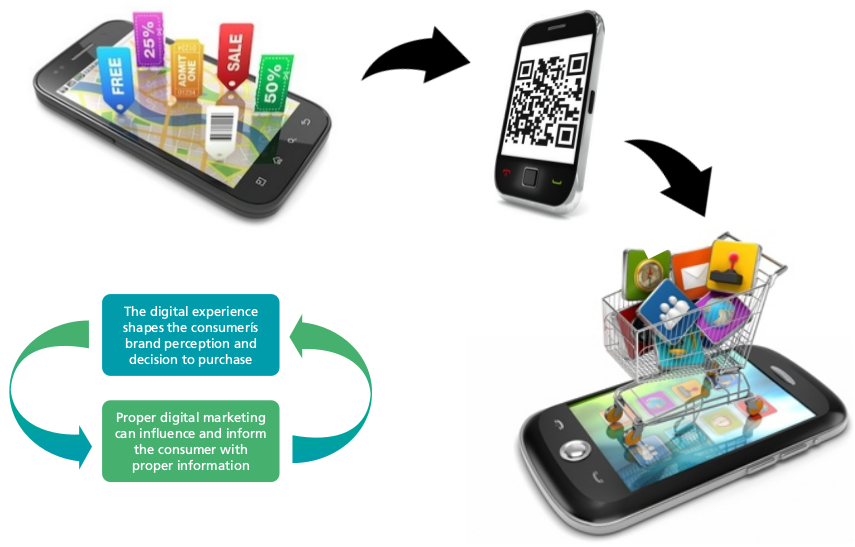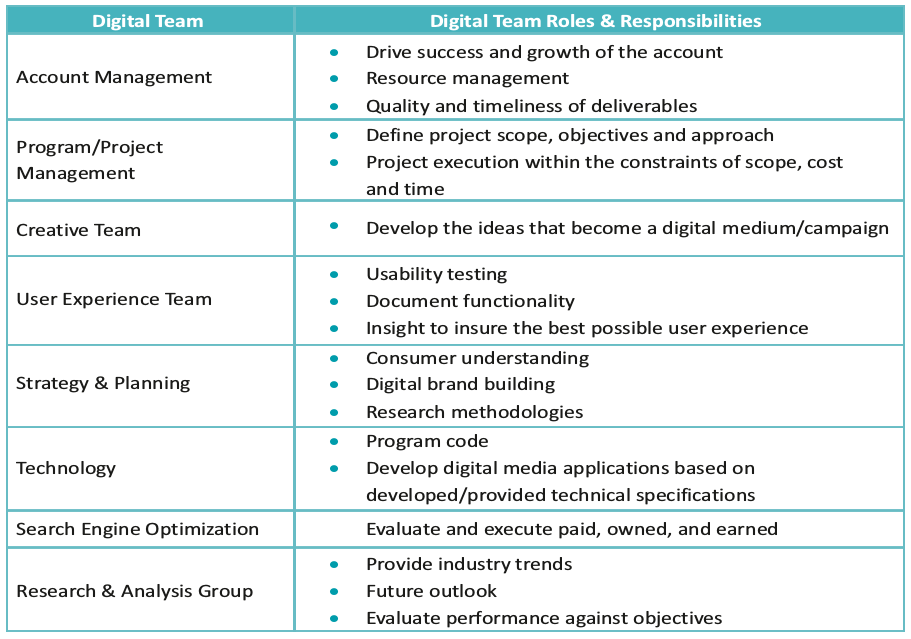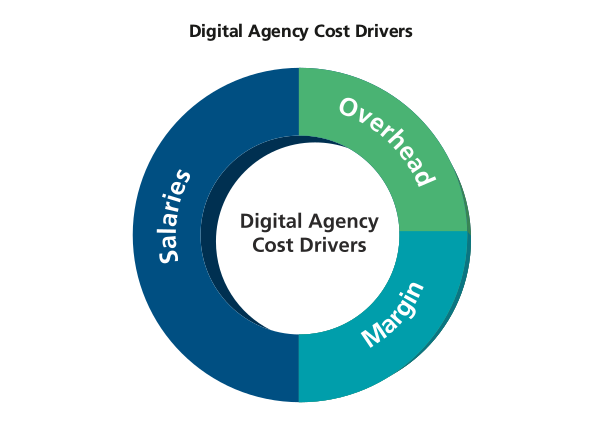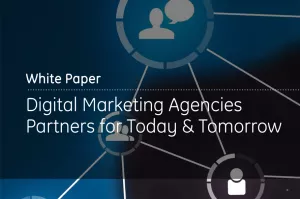Introduction
Facebook launched in 2004, YouTube launched in 2005, Twitter launched in 2006. The first iPhone was sold in 2007. The Apple App Store was launched in 2008. With the introduction of these technologies and applications, our lives changed. Today, Facebook has over 800 million users, YouTube has over 2 billion views a day, Twitter has over 90 million Tweets a day, Apple has sold over 90 million iPhones, and 10 billion Apps have been downloaded from the Apple App Store. Case stated: Consumer behavior, and dialogue with and amongst consumers, has changed dramatically because of newer technologies that have evolved, and continue to evolve at a rapid pace. For companies to keep or gain market share, this shift calls for a whole new set of strategies towards creating a stronger brand experience. A Chinese proverb sums it well – “Adapting to change is like rowing upstream – not to advance is to drop back.” No surprise that many brands rely on best-of-breed “agencies” to navigate through this space.
This paper seeks to share some insights into this rapidly evolving space. For those in procurement, it also serves as a guide to collaborating with your marketing counterparts for finding the right and best in-class digital agencies that can help you maximize your digital marketing ROI and overall brand success.
Digital Marketing Agency Insights
Aside from the impressive growth statistics that Facebook, YouTube, Twitter, and Apple present, for organizations/brands, it boils down to this simple question: how to keep up with the ever-changing digital landscape, engage core consumers and attract new ones? Consumers are now defining the brand, and the brand's essence, via digital and social media. In the past, a marketer could dictate 100 per cent of the conversation, but now, the conversation is no longer one-way. Today, marketers are conversing with consumers; consumers are conversing with consumers; and consumers with marketers. In essence, the marketer is no longer the brand ambassador – the consumers are. For the marketer, the intent of all of the conversation via digital media is to shape the consumer's brand experience, increase brand awareness, and drive purchases.
Influence of Digital Marketing on the Consumer and Brand

What Digital Agencies Manage
Digital agencies that can effectively manage all of these conversations/digital media to increase brand awareness and consumer purchases are an invaluable asset to any organization. The best-in- class lead agencies typically provide market place insights and proper digital integration strategy with your traditional marketing and media firms, and understand how to utilize all digital media (Search, Websites, Mobile, Applications, Hardware, Smart Phones, Tablets, etc. -- Social Media, and Emerging Digital Media) for a digital marketing strategy. Examples of such lead digital agencies are VML, Bridge Worldwide, agency.com, 360i, isobar, Razorfish, etc.
Evaluating Digital Agencies
While reviewing digital agencies, an organization will need to evaluate each of the areas listed below that are critical for the success of the client-agency partnership.
Areas to Assess
- Account Management
- Culture
- Financials
- Integration Ability
- Case Studies/Past Work and Programs
- Creative Ideation
- Digital/Industry Insights
- Digital Strategy
Niche Agency Support
In addition to working with a lead digital agency, partnering with focused niche players in the industry can complement lead agencies' capabilities and portfolio. Most full service gencies claim that they can perform any type of digital work your organization wants. The reality is that while most agencies can, they will not be best-in-class or be able to keep up with the emerging technologies at the same pace as in the marketplace. It falls on the specific organization to evaluate the fit between their needs against the strengths and weaknesses of their lead digital agency partner. Additional niche agencies can complement the lead agency in mobile execution, strategy, application development, CRM, social media strategy or execution. In most cases, developing a working balance between the lead agency and necessary niche digital partners will create a well-rounded digital strategy and top-notch execution of the strategy.
Digital Costs Drivers – Labor
Labor accounts for the largest cost factor in managing and executing digital work. Currently, digital labor is at a premium due to the boom and a shortage within the digital talent pool. Agencies that want to acquire excellent talent have to pay top-rate salaries. A simple way to avoid paying exorbitant fees is utilizing agencies that are not located in large metropolitan cities, where the cost of living and overheads are higher. Also, consider that urban location does not necessarily mean better talent. Another key component is the mix of talent that is staffed on your account. What constitutes account management and is it effective? Does it match your scope and requirements? What is the level of experience? What activities are managed offshore? Getting to the bottom of these questions can mean valuable cost savings without sacrificing quality or service.
Understanding Digital Agency Staffing Models
A full service digital agency should include an optimal mix of account managers, strategists and planners, and a technology execution team. The correct blend of the top and bottom levels within the digital team structure will provide well rounded staffing structure and a balanced rate structure. The organization's strategic needs and the maturity of its digital presence may require a top-heavy or bottom-heavy staffing structure. For example, an organization that has a minimal presence in digital media may need a top-heavy staffing structure with greater experience to get campaigns off the ground and running in the digital space. In contrast, an organization that is fully engaged in the marketplace could utilize a more blended model which will be beneficial for both working efficiencies and costs. The key is to review your staffing model each year as your needs change – structure your agreements to allow for that flexibility.
Digital Agency Team Categories – Roles and Responsibilities
A list of general roles that are typically included within an agency staffing plan is depicted below.

Digital Agency Cost Structures (External)
There are five main costs structures utilized by digital agencies: Retainer Structure, T&M - Blended Hourly Rate or Rate Card, Project Based - Flat Fee, and Pay for Performance. All of the cost structures have strengths and weakness for both the organization/brand and the agency.
Cost Structure Definitions
- Retainer Structure: A retainer is given monthly fee for a given set of services and expectations.
- T&M Blended Hourly Rate: The blended hourly rate will be charged for each hour used up by the agency.
- T&M Rate Card: In a rate card fee structure, the agency bills as per a rate associated with personnel levels for each hour accrued.
- Project Based - Flat Fee: These are projects where a single fee is paid for a defined scope of work to be executed.
- Pay for Performance: This normally has a cost structure component of the above listed, along with a bonus tied to a performance metric, such as sales, impressions, reach, etc.
Cost Structure Tradeoffs
There are many tradeoffs when selecting a cost structure. These tradeoffs can impact the staffing of an agency, its performance and branding. For example, when an agency is retained, a fixed number of people will be dedicated for a brand, but you are locked into paying a set fee even if they do not perform well.
An additional example is a rate card vs. a blended hourly rate. In a rate card structure, the agencies are likely to overstaff expensive resources, and vice versa in a blended hourly model. Ensure you get the right mix of staffing for your needs. These types of items should be considered when deliberating and deciding how to compensate digital agencies.
Negotiation Strategy/Levers
There are three main items in the costs of digital agencies: the cost of the salaries of the personnel, agency overhead and agency margin. First, it is most likely that you have no visibility into any of those components as agencies will not share this information but rather give a total cost. The key strategy here is to ask for the greatest amount of visibility and to competitively bid business so you can leverage information during negotiations. Negotiations with only one agency can quickly lock you in a corner where an agency will agree to make a concession but by reducing staff and service levels. If the agency makes a concession, this should be hitting their bottom line and should not be lowering their staffing levels.
Digital Agency Cost Drivers
During negotiations, there are several levers you can utilize to reduce rates and maximize the value

Negotiation Levers
- Leveraging your brand name
- Economies of scale
- Providing visibility within retainers
- Length of agreement
- Rebate structures
- Payment terms
Conclusion
The digital landscape will continue to evolve. Going forward, all organizations – small or large – will need to ensure a right mix of digital vehicles and strategies to create a competitive advantage. Finding the right agency partners with the right capabilities, insight, execution strength, culture and cost structure will be instrumental to your digital marketing success.
The sooner companies embrace the realities and challenges of marketing in the digital age, the sooner they can use traditional cost-management tools to maximize ROI. By understanding the nuances of marketing partners and digital vehicles, companies can better position their brands to thrive in this new age of marketing.



